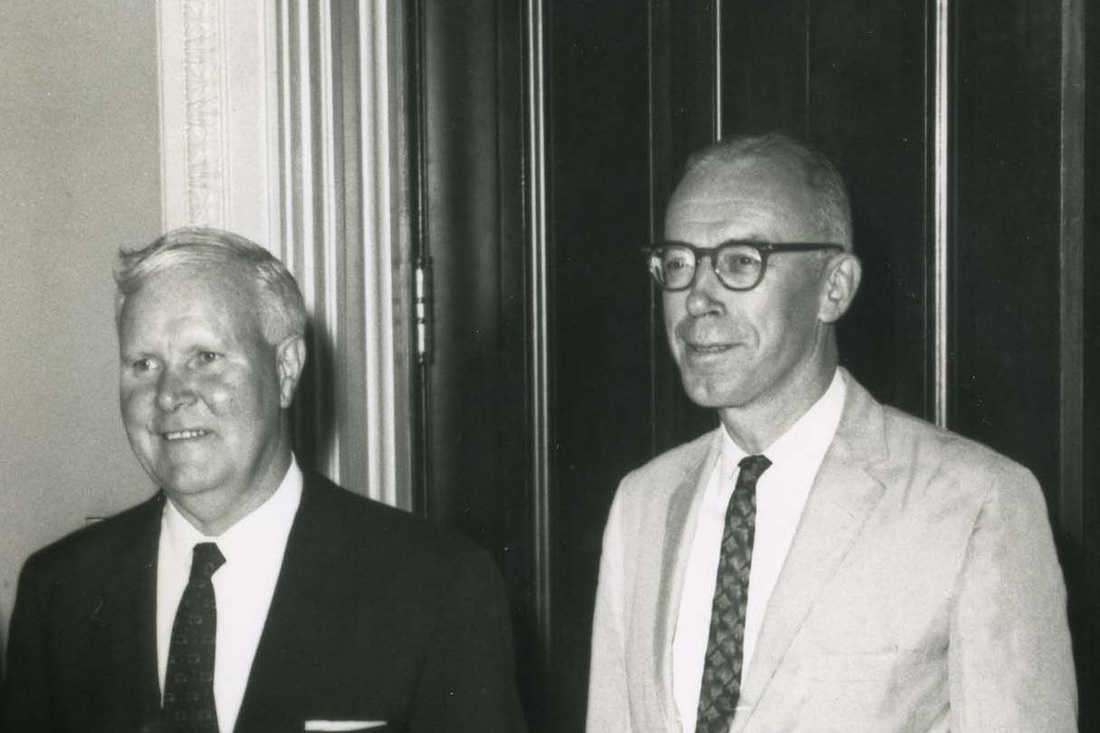|
By Jody Brumage “The East cries out for wilderness – here where the rush and bustle of Twentieth Century society reaches its dizziest pace, places of solitude and natural unspoiled beauty are desperately needed.” – Congressman Ken Hechler, 1974 Congress passed the Wilderness Act in 1964, setting up a framework for federal protection of unspoiled natural landmarks in the United States. Lands designated as wilderness were protected from mining, harvesting of timber, and other destructive industries and instead used to develop recreation and tourism. However, in the decade following its passage, the balance of protected lands swung heavily to the western states where more than 10 million acres of land had been declared wilderness compared to just 27,000 acres in the eastern states. This disparity stemmed from the definition of wilderness provided in the 1964 act, which required lands to be “an area where the earth and its community of life are untrammeled by man.” This excluded many of the eastern national parks and forests which were reclaimed and in the process of being restored to their original state, reversing the effects of decades of extraction of natural resources. To address this disparity, several members of Congress began to push for legislation that would redefine “wilderness” and open the door to the eastern states for inclusion under the protection of the Wilderness Act. Two of West Virginia’s representatives, Congressman Ken Hechler and Congressman Harley O. Staggers, Sr. each introduced legislation in the 93rd Congress including thousands of acres of land in West Virginia for protection under the Wilderness Act. Both Hechler and Staggers proposed including the Dolly Sods (Tucker, Pendleton, and Grant Counties), Cranberry Glades (Pocahontas and Webster Counties), and Otter Creek (Randolph and Tucker Counties). In addition, Hechler supported inclusion of Laurel Fork (Pendleton County). On April 2, 1974,Congressman Hechler testified before the House Interior Committee in support of the four proposed wilderness areas as well proposals from neighboring states. While the two member’s bills were being delivered to committee for consideration, Congressman Staggers took the issue to his constituents, circulating a questionnaire to residents of the counties which would be included in the proposed wilderness areas and seeking their opinion. The survey’s findings were delivered to the House Interior Committee as part of the hearing process and marked the first time a member of Congress had surveyed constituents on the issue of protecting areas under the Wilderness Act. In the summer of 1974, the findings of the survey were made public. After the staff had compiled responses from over 1,000 constituents, the survey showed strong support for the proposed wilderness areas with the exception of Laurel Fork. Despite receiving overall support, the inclusion of Laurel Fork was highly unpopular with residents of Pendleton County who would be most directly impacted by its designation as wilderness. The proceedings in Congress to expand the protections of the Wilderness Act to the eastern United States continued into the next year. At the beginning of the 94th Congress, the Eastern Wilderness Act was passed and signed into law by President Gerald Ford, declaring 16 new wilderness areas, including Dolly Sods and Otter Creek and adding several as “study areas” to be considered for inclusion at a later date. The Cranberry Wilderness was one of the “study areas” in the 1975 act and was officially designated as a wilderness area in 1983, along with Laurel Fork. Two additional wilderness areas, Roaring Plains West and Spice Run were given designation in 2009. Thanks to the efforts of Congressmen Staggers and Hechler, Senator Robert C. Byrd, as well as many others, West Virginia’s natural landmarks have received due recognition and protection under the Wilderness Act and continue to contribute to the state’s massive tourism and recreation industry.
Comments are closed.
|
Welcome to the Byrd Center Blog! We share content here including research from our archival collections, articles from our director, and information on upcoming events.
Categories
All
Archives
July 2023
|
Our Mission: |
The Byrd Center advances representative democracy by promoting a better understanding of the United States Congress and the Constitution through programs and research that engage citizens.
|
Copyright © Robert C. Byrd Center for Congressional History and Education
|



 RSS Feed
RSS Feed
